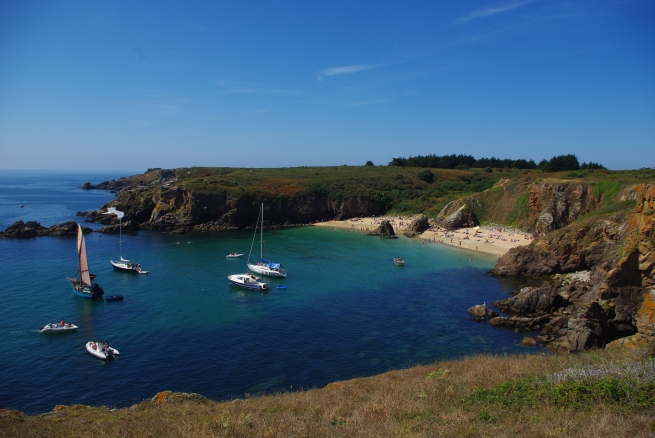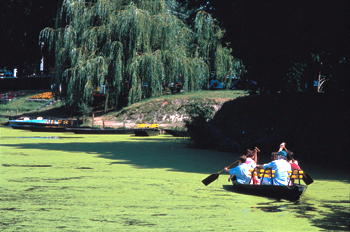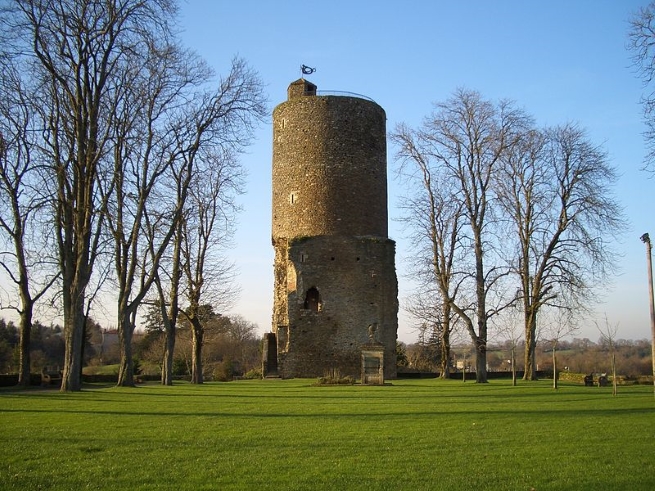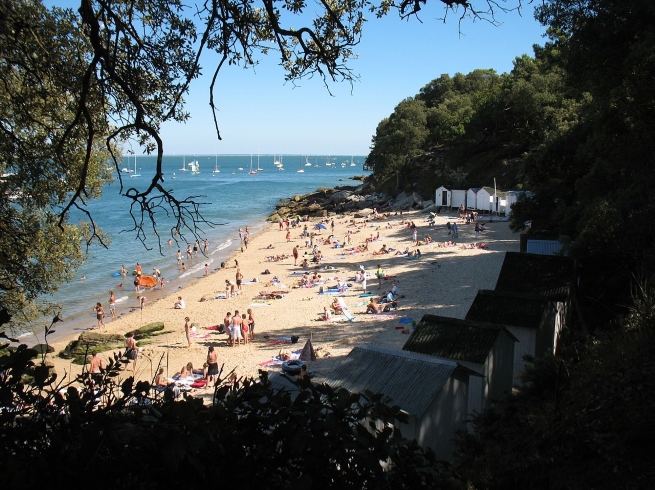Very Vendée!

France Today takes a tour around this department

Visualise a piece of France fringed on one side by huge licks of perfect yellow beach and enough sailing opportunities to make Ellen MacArthur blush. Offshore are two unspoilt islands where daily life revolves around the sea and its fruits. In the same frame, imagine another region whose diverse interior landscapes comprise, in equal measure, canal-crossed marshes, hilly woodlands and wheat-covered plains. Finally, think of a place where you can explore ancient stone churches and renaissance châteaux in the morning, enjoy super-fresh fruits de mer and cooled Muscadet for lunch and still have time to visit a state-of-the-art theme park before teatime.
This composite picture is not a fantasy cherry-pick of the best of the Hexagone, but a whistle-stop jaunt around a single département in Western Loire. In short, if you get bored in the Vendée, you will probably get bored anywhere. But it can be tricky knowing where to start!
A good way to appreciate this wildly juxtaposed geography is to begin at the foot of the Vendée, in the southern marshland, the Marais Poitevin, before heading north through the wooded bocage and settling on one of the glorious beaches on the western seaboard, scene of MacArthur’s famous round-the-globe triumph in February 2001. For a back-to-nature experience to remember, take a boat trip from the small town of Damvix at the widest part of the Sèvre Niortaise (the name for this portion of the Marais Poitevin’s 3,500 miles of navigable waterways). Here in summer, as your punt cuts a sedate swathe through the bright green ‘lentil’-covered water, and you duck beneath the overhanging ash trees, you will begin to appreciate the affinity with water that local agriculturalists and residents have felt for decades.
The rivers aside, there are many worthwhile diversions in the southern Vendée. The first is the abbey at Neuil-sur-Lautise. Founded in 1068 and granted royal status in the 12th century by Eleanor of Aquitaine, the abbey boasts the only completely preserved Romanesque cloister in western France. Equally impressive is the multimedia installation in the upper cloister that evokes monastic life through a sound-and-light show. The second is the Château de Terre Neuve in nearby Fontenay-le-Comte, a privately owned castle built in 1580 by Nicolas Rapin, a companion of Henri IV. The famous writer Georges Simenon lived here during the Second World War, and his writing desk remains on display today, along with a fine collection of items of 17th- and 18th-century clothing.
Unmissable, too, is the Centre Minier de Faymoreau, a museum dedicated to the village’s 130-year history of coal mining. Children love the virtual descent into a mineshaft and the superbly constructed exhibition of mining activities, while adults will appreciate this vivid glimpse into French rural history.

Vouvant, photo: SeeSchloss
After a quick stop in the village of Vouvant, which has been nominated a ‘village de caractère‘ (‘village with character’) thanks to its striking location beside the River Vendée (which gave its name to the département, of course), head away northwards. The character of the landscape slowly shifts, as the rolling fields of the Plaine Vendéenne give way to the coppiced hillsides of the Haut Bocage. In its heartland, near the town of Les Epesses, is the Vendée’s finest and most popular family attraction, the stunning Puy du Fou theme park. The park will keep both adults and children amused and entertained, and without doubt warrants a full day’s visit. Covering an area of 100 acres, the park offers a cornucopia of spectacular shows including gladiatorial combat, an authentically re-created medieval town and a falconry display that features a ‘flying ballet’ set to music. Visitors can also relax by wandering the extensive parkland dotted with wild animals and beautifully tended gardens.
For traditional Vendéen sustenance at the Puy du Fou, lunch in style at a banquet where local hams, charcuterie and brioche are served up while jesters entertain and lace-clad serving girls top up wine goblets. Elsewhere in the region, the gastronome can expect somewhat more sophisticated dishes. Game, poultry and plenty of fresh vegetables are served up all over the Vendée, along with fine local produce, and, as you head eastwards towards the coast, menus are inevitably dominated by seafood.
The Atlantic Coast is specked with family-orientated holiday resorts (Saint-Jean-de-Monts has some of the best children’s facilities) and celebrated sailing towns that stage regular regattas, like les Sables d’Olonne and Saint-Gilles. One place, however, that most epitomises the region’s close relationship with sea is the Ile de Noirmoutier, off the northeast coast. This is the bigger of the Vendée’s two islands and, with its salt marshes, oyster farms and Maritime Museum, is coastal tradition incarnate.
Noirmoutier is a living, working agricultural community (also famous for its new potatoes), with few concessions to tourism, although the town has excellent restaurants and boutiques offering local products. And from the backstreets of the Quartier du Banzeau in Noirmoutier village to the white stone and blue-shuttered houses that dot the rest of the island, visitors will feel the unique atmosphere of a traditional seaside community. The island also has some very pretty beaches, the sweetest of which is the Plage des Dames, set in a cove and lined with white beach huts.

Plage des Dames Noimoutier, photo: Andre Oortgijs
The Vendée’s other island, the île d’Yeu, has an animated fishing port – Port Jonville – and a wild coastline bordered by fine sandy creeks, and is reached by ferry from the mainland. It only has a few hotels, but has plenty of places in which to sample the daily catch. Like so many other places in the region, it makes for a great day out and the chance to discover yet one more aspect of the Vendée’s multi-faceted personality.
In conclusion, the Vendée is a place worth discovering at leisure, a place for darting off through the marshland one day and lazing on the beach the next. Only half the picture has been described here, so why not head off the beaten track to unearth some of the unique secrets of la vie vendéenne for yourself?
GETTING THERE
AIR
Easyjet flies from Gatwick to Nantes as does Flybe.
SEA
Brittany Ferries sails from Portsmouth to Saint-Malo. Condor Ferries sails from Poole and Weymouth to Saint-Malo.
ROAD
From Saint-Malo, take the N137 through Nantes. From there, take the D763 and the D937 for La Roche-Sur-Yon, the Vendée’s capital. From Paris, take the A11 to Nantes.
OUTINGS
The multimedia museum and the preserved monastic cloister at Eleanor of Aquitaine’s Abbey in Neuil-sur-L’Autise.
To see where Georges Simenon lived, and to enjoy a fine collection of 18th- and 19th-century clothing visit the stunning Château de Terre Neuve in Fontenay-le-Comte.
A tour of the evocative museum devoted to local mining history at the Centre Minier de Faymoreau.
Given the number of spectacles and exhibits on show, a day out at the Puy du Fou theme park is excellent value.
Share to: Facebook Twitter LinkedIn Email
Leave a reply
Your email address will not be published. Required fields are marked *



